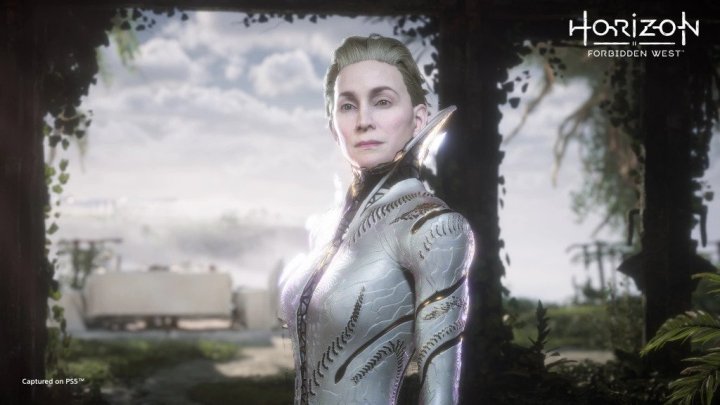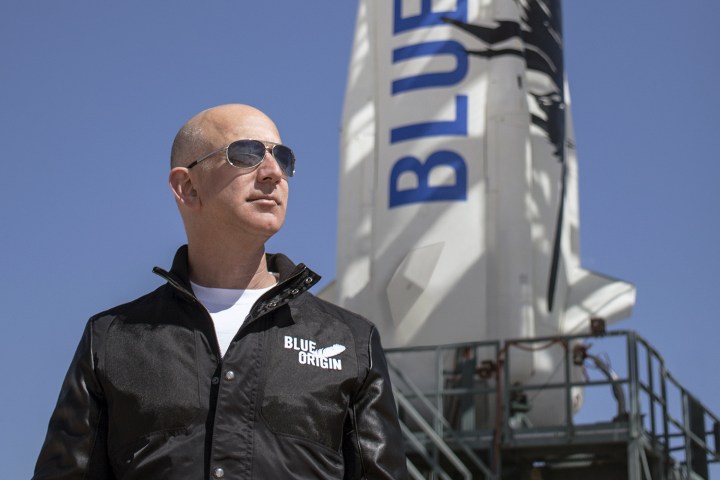Compared to most PlayStation exclusives, the Horizon series is politically loaded. Horizon Zero Dawn offers up a firm critique of the United States’ eagerness to militarize technology. It imagines a future where intelligent robots built to aid the U.S. military have brought about the apocalypse. Weave in some environmental themes and you’ve got a pretty pointed take on our modern world.
With Horizon Forbidden West, developer Guerilla Games continues to not pull any punches. But rather than restating its predecessor’s points, it puts another target in its sights. The dystopian action game is a searing critique of big tech that takes jabs at billionaires like Jeff Bezos. It takes no prisoners in its future-ready takedown of techno-colonialism.
This article contains spoilers for Horizon Forbidden West, so be warned before reading on.
Meet the Zeniths
Horizon Forbidden West starts simply enough. Coming off the events of the first game, Aloy is now hailed as a hero throughout the U.S. after destroying a rogue A.I. named Hades. Her work isn’t finished, though. She sets out on a journey to the West Coast so she can continue her quest to save humanity.
Early on, the themes are straightforward. The game once again emphasizes the importance of preserving the planet and not letting technology destroy nature. Its direction seems clear … and then the Zeniths show up.

In a bizarre midgame twist, Aloy comes face to face with a trio of humans in high-tech spacesuits. The mysterious characters have seemingly impenetrable force fields and apparently nefarious plans for Earth. For a good chunk of the game, it’s not clear who they are or what they want. They’re just a bunch of flying weirdos that throw a wrench in Aloy’s heroic plans until a grand reveal cracks the game wide open.
It turns out that the Zeniths were Earth’s wealthiest tech elites prior to the planet falling to ruin. When things went south, they piled into a rocket and fled to safety while the rest of the human race died off. After floating around in space while humanity rebuilds itself, they return to Earth with the intention of making it their own. To do that, they plan to wipe the planet out and start again with a blank canvas.
There’s a lot to unpack there.
Bezos in space
The Zenith story dovetails with some current events in our real world. Whether or not it’s intentional, it reads like a commentary on the big-tech space race that’s seen controversial figures like Elon Musk reaching for the stars. One of the spacemen even bares a resemblance to Jeff Bezos, who successfully launched into space last summer.

Bezos’ foray into space tourism drew major criticism at the time, with some questioning why the tech mogul was so keen to invest in other planets instead of using his wealth to fix our own.
“Poverty? Hunger? Homelessness? Disease? Paying your workers a fair wage, or at least giving them a bathroom break? Paying taxes?” Esquire writes in an opinion piece from the time. “None of these seemed to occur to an American oligarch. Instead, he’s been selling $1 billion in Amazon stock per year and pumping it into Blue Origin.”
Horizon Forbidden West shares those frustrations, lambasting its fictional billionaires for using their wealth to escape Earth instead of helping it. That’s a stark contrast to Aloy, who is committed to aiding every person she comes across (well, except the “bad guys” she routinely cuts down) and rebuilding the world.
The game draws a parallel between the modern obsession with space colonization and America’s dark history with the concept. There’s no ambiguity about a story where a ship full of strangers land in the U.S. and plot to wipe out its indigenous people so they can settle there. Horizon Forbidden West’s story doesn’t trust that figures like Jeff Bezos are responsible enough to lead a space colonization effort any better.

Perhaps Guerilla Games is trying to correct its own past by talking about colonization. When Horizon Zero Dawn launched, it was criticized for using loaded words like “savages” to describe some of its tribes. The series is certainly guilty of using historically oppressive language while appropriating imagery from various cultures. The sequel raises the same concerns (it’s still a game about indigenous tribes starring a white hero), though it feels more willing to engage with the real struggles indigenous people face.
Horizon Forbidden West isn’t subtle about its politics (it features a creepy antagonist named “Ceo”), and that’s for the best. While studios like Ubisoft have tried to affirm its games don’t have a political stance, Guerilla Games goes for the jugular here. In an era where big-tech celebrities are funneling infinite reserves of cash into vanity projects, Horizon Forbidden West shows us just how dangerous that can get when we stop paying attention.
Horizon Forbidden West is available now on PS4 and PS5.
Editors' Recommendations
- I was a PlayStation Portal hater. Now it’s one of my go-to gaming devices
- This PS5 Pro leak reveals a massive jump in performance
- 2023 gaming report card: how did PlayStation, Xbox, and Nintendo score?
- This psychedelic PlayStation platformer is already 2024’s most surprising game
- Sony’s latest partnership is a big move for PlayStation’s mobile future




